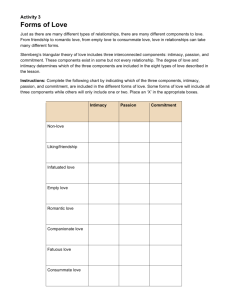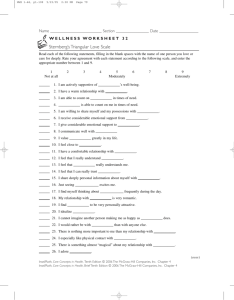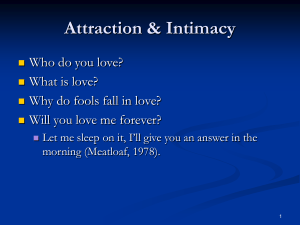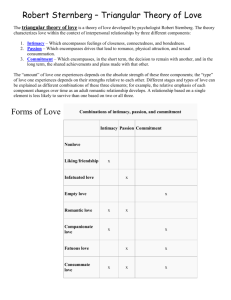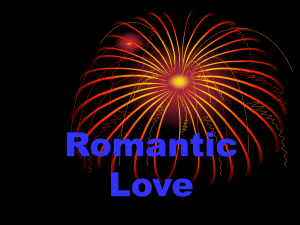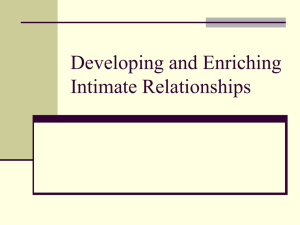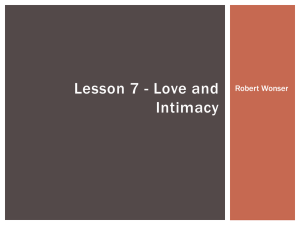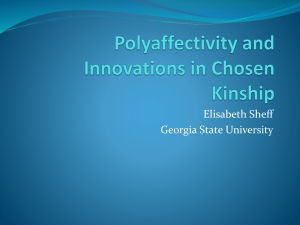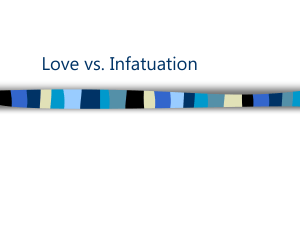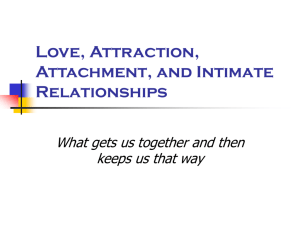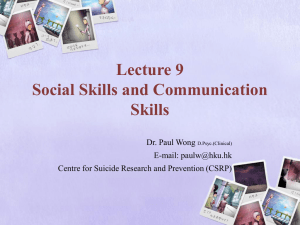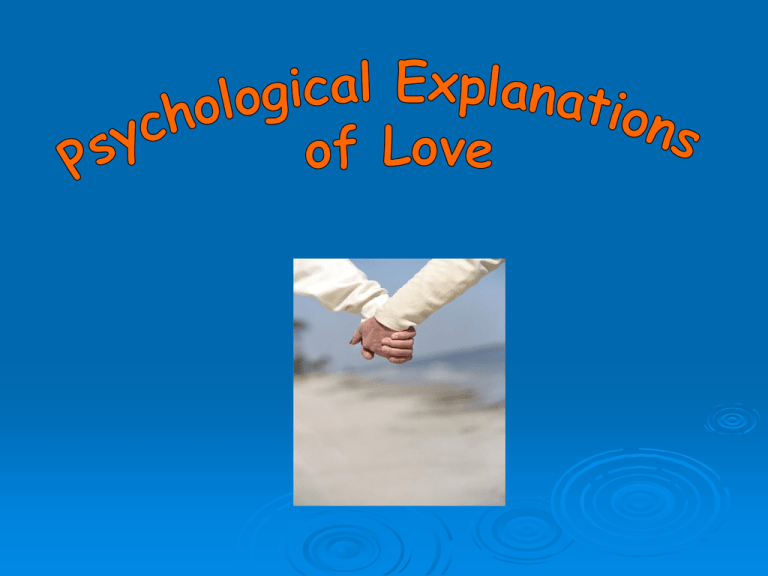
LIKING & LOVING
RUBIN (70) put forward:
The love scale which measures:
1.
Desire to help the other person
2.
Dependent needs of the other person
3.
Feelings of exclusiveness and absorption
The liking scale which measures:
1. Respect for the other person’s abilities
2. Similarity in attitudes
However, STERNBERG & GRAJEK (84) found that the liking
and loving scales are highly correlated, suggesting they do not
discriminate well between the two e.g.
Scores for a lover = +0.72
Scores for a best friend = +0.66
Scores for one’s mother = +0.73
Scores for one’s father = +0.81
ROMANTIC & COMPANIONATE LOVE
BERSCHEID & WALSTER (78) developed
Rubin’s work to form a distinction between:
Companionate love – liking that involves
more depth of feeling and involvement.
Romantic Love - develops over time through
mutual rewards, familiarity, positive
emotions
Passionate love - based on intense emotions,
which become diluted over time.
THE LOVE QUIZ
HAZAN & SHAVER (87) argue the reason adults
experience different kinds of love is because of
attachment experiences as infants.
Devised LOVE QUIZ (questionnaire to assess style of love and
attachment type), printed in the ‘Rocky Mountain News’.
Found a consistent relationship between attachment ‘type’ and
adult style of love:
Securely
attached
Love experiences are happy, friendly, trusting.
Accepts partner’s faults. Enduring.
Resistant
Love is obsession. Desires reciprocation, emotional
highs and lows. Extreme sexual attraction and
jealousy. Worried partners might abandon them.
Avoidant
Fear intimacy, emotional highs and lows, Jealousy.
Believe do not need love to be happy.
STERNBERG’S TRIANGULAR THEORY
STERNBERG (86) argued types of love are determined by 3 points
of a triangle:
Passion
Intimacy
Liking/ friendship Intimacy
Romantic
Intimacy + Passion
Companionate
Intimacy +
Commitment
Empty
Commitment
Fatuous
Commitment +
Passion
Infatuated
Passion
Consummate
Commitment +
Passion + Intimacy
Commitment
Combinations of
the 3 points lead
to different types
of love. The most
ideal type is
consummate, but
its difficult to
achieve.
http://en.wikipedia.o
rg/wiki/Triangular_th
eory_of_love
Triangular Theory of Love
Intimacy: Feelings of closeness, being connected and
bonded in a loving relationship.
Passion: That which drives us to romance and physical
attraction, sexual consummation.
Commitment/Decision: Being in love with someone else
in the short term & the commitment to maintain that love
in the long term.
Evaluation
- Problems arise when one person feels romantic love for a person, whilst they only
feel companionate love
- Theories of love remain very objective – they only describe love, but not actually
explain it, may be impossible to test scientifically
- Different theories/studies – no consensus over a definitive explanation, if at all one?
- Ignores cultural differences – Is there a universalistic view of love?
- Provide nomothetic views – yet there are individual + cultural differences.
- Contemporary relevance – can’t explain homosexual or electronic relationships
THREE FACTOR THEORY OF LOVE
HATFIELD & WALSTER (81) argued all emotional experiences
are the outcome of:
(1) being in a state of emotional arousal
(2) providing an appropriate label for the arousal.
Cultural exposure
Romantic Love
Physiological Arousal
Appropriate Love
Object
But does love even exist?......
Sociobiological
theories would suggest
that we only mate for survival.
Task:
Fill in the sheet to include
sociobiological ideas as well as these
ideas. You will need to look back in your
notes on attraction.

